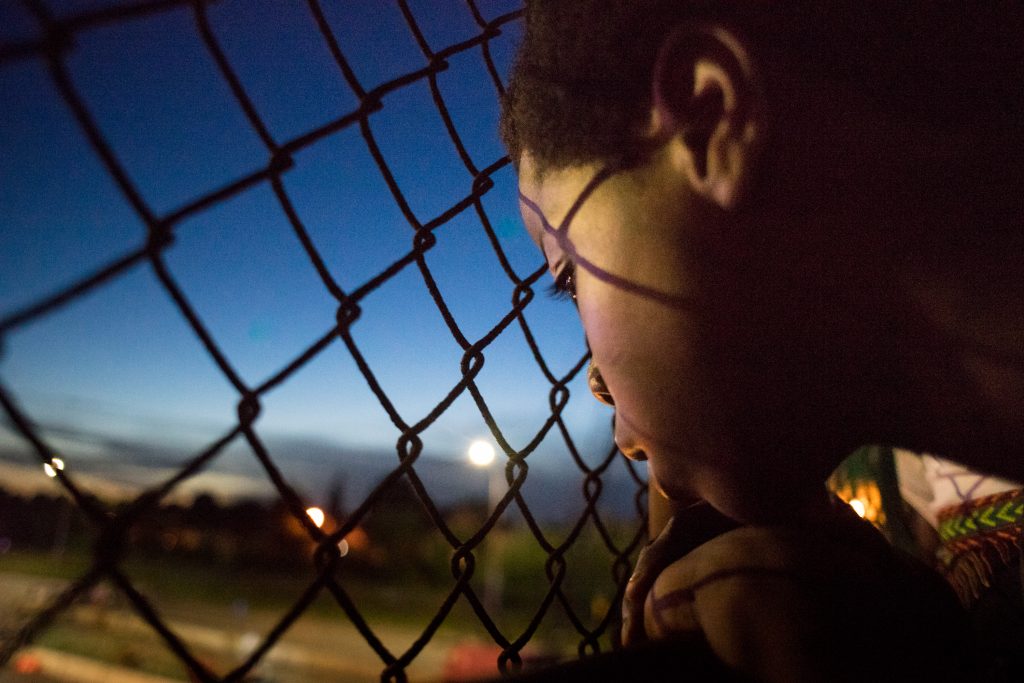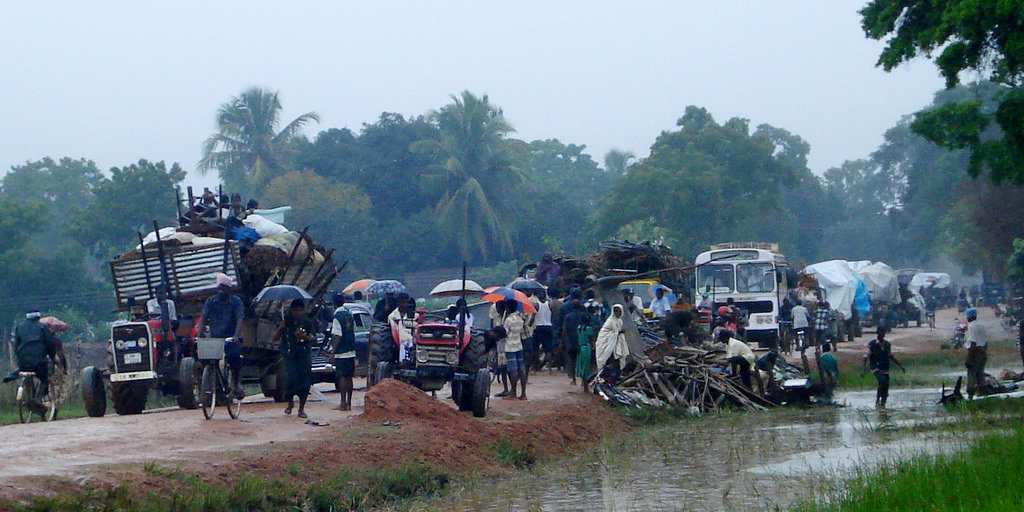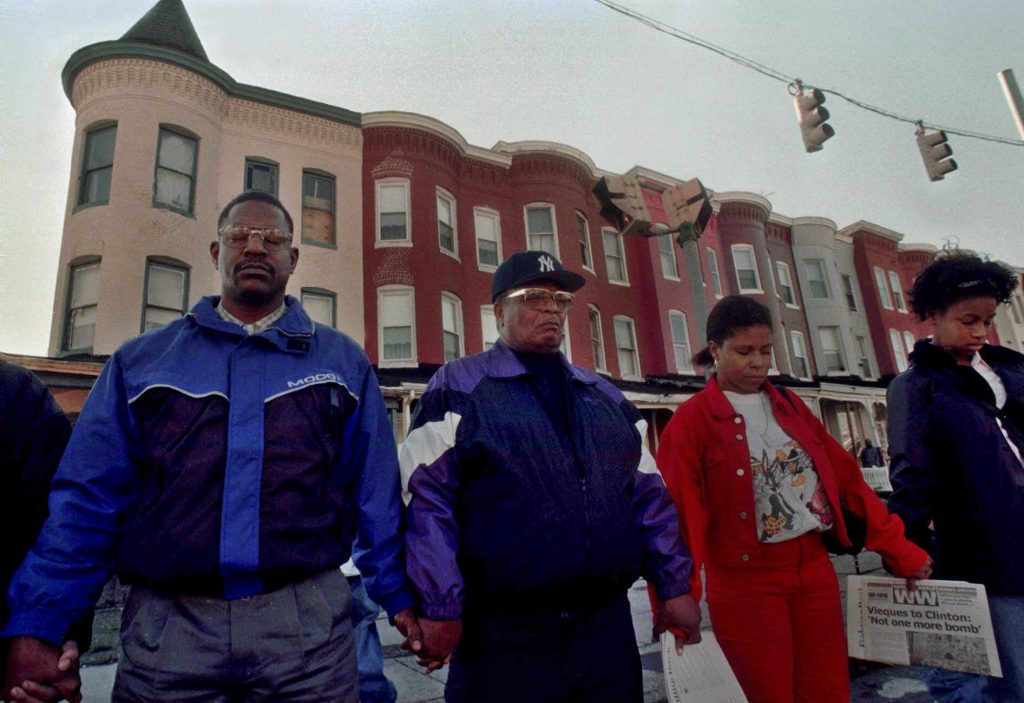Black Lives Matter and Reflections From a Civil War

In the early morning hours of July 5, 2016, Alton Sterling, a 37-year-old-black man, died after being shot several times at close range while he was held down by police officers outside a convenience store in Louisiana. A bystander video showed Sterling being detained, tased, and pinned to the ground by officers—and then shot. The next night, Diamond Reynolds live-streamed a video on Facebook during a traffic stop in Minnesota: Her boyfriend, Philando Castile, the driver of the car in which she was the passenger, had been fatally shot by a police officer as he reached for his wallet. Diamond’s 4-year-old daughter was sitting in the back seat.
Like many others, I watched all this in disbelief, sorrow, and anger. As the mother of two little brown boys, I wept—for the danger they might face due to the color of their skin, and also for the safety of my friends and their loved ones, many of whom are brown or black.
Throughout the United States, similar shootings and incidents of police brutality have given rise to Black Lives Matter (BLM), a grassroots movement working to end anti-black racism. In the hours and days following the Sterling and Castile shootings, thousands of people took to the streets to protest. The year before, I had seen violence erupt in Baltimore (where I live) over the death of Freddie Gray, another young black man who died after being held in police custody. Hundreds of people were arrested in the ensuing protests and riots, and a state of emergency was declared, with thousands of police and National Guard troops called in. Having lived through the beginning of a civil war as a child in Sri Lanka, I am particularly sensitive to the onset of unrest, and I worried about the escalation of violence.
A week after the Sterling and Castile shootings, I spent time with my 74-year-old father, who often visits me from upstate New York. As we walked and drove around some of the poorest neighborhoods in Baltimore, I asked him his thoughts about rising anti-black violence and the BLM movement. Shocked and deeply saddened by the living conditions we were witnessing, he said dejectedly, “It’s the same. When you keep people down, they don’t have a choice. We tried to work things out too. But there was no choice for our young people.”
That’s when I realized he was comparing anti-black sentiment in the United States to the systematic subjugation of Sri Lankan Tamils, which led to the brutal, three-decades-long Sri Lankan civil war (1983-2009). It’s not just the physical violence that made him draw the comparison. My father often talks about the “living death” surrounding the Sri Lankan war: a slow and systematic campaign to destroy people through political erasure and social oppression. That, sadly, is what he sees now in the United States. In Sri Lanka, generations of structurally ingrained discrimination turned peaceful protest into violence and eventually war. I wondered if that could happen here too if these blatant acts of violence toward black people continue.
My father was born on the small island nation of Sri Lanka in 1942. The country, then called Ceylon under colonial British rule, had long-simmering tensions between a Sinhalese majority (a group of people descended from northern India who speak Sinhala and are predominantly Theravada Buddhists), and a Tamil minority (once approximately 25 percent of the population, now about 15 percent, who trace their origins to southern India or Sri Lanka, speak Tamil, and are mostly Hindu). My father is Tamil.
When my father was 5 years old, Sri Lanka gained independence from the United Kingdom. The new Sinhalese government leaders reacted to what they had long seen as British favoritism of Tamils: They introduced discriminatory policies, including legislation that stripped Tamils of their citizenship and voting rights, and made Sinhala the country’s official language and Buddhism the official religion. Around the time my father finished secondary school, the Sinhala Only Bill was passed, which effectively excluded Tamil youth from opportunities like working in the civil service and in other public institutions. Violent riots erupted in response, and thousands of Tamils perished. In 1971, a few years before I was born, a preferential admissions system known as the “policy of standardization” was adopted to help geographically disadvantaged Sinhalese students gain access to higher education. Many Tamils, including my father, felt that they and their children were being squeezed out.
“We tried to follow the path of nonviolence to fight racism and discrimination,” says my father, recalling nonviolent Tamil protests. These protests did not result in any policy changes; instead, they were met with state-sponsored and civilian violence. In the early 1970s, the protests turned into calls for a separate independent Tamil state. Young Tamils who had grown up during an era of anti-Tamil violence began forming militant organizations, preferring an armed path of resistance. In 1981, the police and military burned the Jaffna Public Library, which housed tens of thousands of Tamil books and other heritage pieces. “They burned our culture,” my father often says. “That’s when we felt that separatism was the only way to stay alive.”
In the early 1980s, things spiraled into full-blown conflict. At the core of the fighting was the Liberation Tigers of Tamil Eelam (LTTE, also known as the Tamil Tigers), a paramilitary separatist organization labeled by the United States and other countries as a terrorist organization. My family was one of few who were fortunate enough to get out. Just weeks after deadly, pivotal riots occurred in July 1983, we were able to leave the country and meet my mother’s relatives who had already immigrated to the United States. We left abruptly, with only two small suitcases and the clothes on our back.
Although I was just 7 years old when we left Sri Lanka, I have some clear memories of childhood that will always stay with me. Even in my small neighborhood, I remember an army checkpoint at the end of the main road. My friends and I used to play and ride our bikes down that road and had to cross the checkpoint to get to stores, schools, and other homes. I remember being told by my parents how to act near the checkpoint: walk straight and slow, don’t make sudden movements, and if confronted by any uniformed officer, answer all questions and obey orders no matter what. This wariness became a part of my muscle memory; my body still automatically tenses up around uniformed police and military 35 years later.
Growing up in the United States, I followed the Sri Lankan civil war through stories from relatives, family friends, and the media. I heard accounts of forced disappearances, torture, and rape. I saw pictures of dead bodies, shelled homes, and flattened villages. The worst were from the last year and a half of the war. The Sri Lankan army surrounded the LTTE in a 115-square-mile area in northeastern Sri Lanka: 250,000 people were trapped inside that boundary, where government forces systematically shelled hospitals, homes, schools, and humanitarian facilities to wipe out the independence forces.
The United Nations estimates that between 40,000 and 70,000 Tamils were killed in the final phases of the war in 2008 and 2009. More than 100,000 people perished during the entire war, and many argue that the number of fatalities reaches far higher. Hundreds of thousands were displaced. The U.N. accused both the LTTE and the Sri Lankan government of horrific human rights violations. Although the government declared the war officially over in 2009, activists and human rights organizations continue to charge the government with ongoing police brutality, militarization of civilian areas, and downplaying accusations of genocide.
My father rarely speaks about the war. But when he does, his stories are more about the devastating effects of anti-Tamil sentiment than about violent killings. I often reflect on his stories now. Anti-black violence has become ordinary in America. Brutal killings aside, much of this violence plays out through everyday laws, regulations, policies, and acts meant to segregate, marginalize, and dehumanize. These measures are the enduring legacy of American white supremacy and the pervasive racism that continues to shape our society.
The events in Baton Rouge, Baltimore, Minnesota, and elsewhere are not just unfortunate episodes. Overwhelming evidence shows that stark and severe racial bias and inequities exist throughout all facets of American life. Black individuals and communities suffer from reduced employment and housing prospects; political, economic, and social disenfranchisement; poor physical and mental health; and adverse effects on families and children.
Sociologists have shown that the American prison boom over the past 50 years has made imprisonment commonplace for young, disadvantaged black men entering adulthood. The effects of this are far-reaching and hard to track: the typical accounting of the economic well-being of social classes doesn’t usually take incarceration into account, even though prison time deepens the disadvantages for the most marginalized men in U.S. society and passes disadvantages on to their families and children.
Many claimed that the election of Barack Obama, the first black man to be elected to the U.S. presidency, signified that America had truly become a post-racial society. In fact, disparities between white and black Americans continue to widen due to colorblind policies in economic recovery and education. Since the 2008 subprime mortgage and housing crisis, for example, many white households have largely recovered while most black households are still struggling.
Anthropologists have used the term “structural violence” to bring attention to these inequities, which stem from a complex web of political racism, economic disenfranchisement, and discrimination, and which are embedded in basic social structures like policy and law. A few months ago, for instance, the U.S. Department of Justice issued a scathing report on the Baltimore City Police Department. The report concluded that policies enacted in the 1990s, which fostered more aggressive policing, had led Baltimore police to routinely violate the civil rights of black residents, who were disproportionately stopped, frisked, and arrested without legal justification.
These disparities are at the heart of the protest and outrage that has defined black movements from the Civil Rights Congress (CRC) of the 1940s and 1950s to BLM today. The CRC, a civil rights organization focused on protecting black people from police brutality and injustice in the court system and bringing international attention to racial injustice in America, charged the U.S. government with genocide 65 years ago. Likewise, the BLM movement recently demanded reparations for past and continued grievances against black people, as well as sweeping changes to redress inequities in housing, employment, education, and health.
Much like the dark time that is etched so deeply in my father’s memory and mine, the United States is living through a “living death”: a slow erasure and systematic vilification of an entire people. Like the killings of Tamil civilians in Sri Lanka, anti-black violence is most visible when there are murderous police shootings. But an even more pernicious form of violence—masked in the ordinary and the everyday—has been killing black people for centuries.
The brutal killings of Sterling, Castile, and Gray have outraged many. Perhaps the constant anti-black violence and systematic injustice have finally become too much to bear. People of color have a right to be treated as equals, with dignity and respect. Discriminatory policies and social practices that disenfranchise, economically stunt, and socially malign an entire group of people must continue to be challenged and reversed. This is particularly urgent given the hateful, vitriolic rhetoric that Donald Trump’s election to the U.S. presidency has stoked and amplified. My father is right: Sri Lanka should be a warning to America.



































